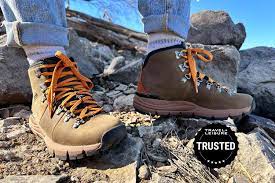Essential Guide to Choosing the Best Hiking Footwear for Your Outdoor Adventures

The Ultimate Guide to Choosing the Perfect Hiking Footwear
When it comes to hiking, having the right footwear can make all the difference in your outdoor adventure. Whether you’re a seasoned hiker or just starting out, selecting the perfect hiking shoes is crucial for comfort, support, and safety on the trails.
Types of Hiking Footwear:
There are three main types of hiking footwear to consider:
- Hiking Shoes: Lightweight and flexible, ideal for day hikes and well-maintained trails.
- Hiking Boots: Sturdy and supportive, suitable for rugged terrain and longer hikes.
- Hiking Sandals: Great for hot weather hikes or water crossings, providing ventilation and quick drying.
Key Features to Look For:
When choosing hiking footwear, consider these key features:
- Fit: Ensure a snug fit with room for your toes to wiggle. Try on shoes in the afternoon when your feet are slightly swollen.
- Sole Grip: Look for a durable sole with good traction to prevent slips on various terrains.
- Ankle Support: Hiking boots provide more ankle support than shoes or sandals, reducing the risk of sprains.
- Waterproofing: Consider waterproof or water-resistant materials for wet conditions or stream crossings.
- Breathability: Opt for breathable materials to keep your feet cool and dry during long hikes.
- Cushioning: Choose footwear with adequate cushioning to absorb impact and reduce fatigue.
Tips for Trying On Hiking Footwear:
When trying on hiking footwear, remember these tips:
- Wear appropriate socks: Bring along the socks you plan to wear while hiking for an accurate fit.
- Walk around: Take a few steps in the store to test comfort and fit before making a decision.
- Bend and flex: Check flexibility by bending the shoe’s sole to ensure it moves naturally with your foot.
5 Essential Tips for Selecting and Preparing Hiking Footwear for Comfort and Safety
- Choose hiking boots or shoes that provide good ankle support to prevent injuries on uneven terrain.
- Opt for waterproof footwear to keep your feet dry and comfortable in wet conditions.
- Select breathable materials to help regulate foot temperature and reduce sweating.
- Ensure a proper fit by trying on hiking footwear with the socks you intend to wear while hiking.
- Break in new hiking shoes or boots gradually before embarking on long hikes to prevent blisters and discomfort.
Choose hiking boots or shoes that provide good ankle support to prevent injuries on uneven terrain.
Selecting hiking boots or shoes that offer excellent ankle support is crucial for preventing injuries while traversing uneven terrain. The added stability and protection around the ankle area can significantly reduce the risk of sprains or twists, providing hikers with the confidence to tackle challenging paths with ease. By prioritizing footwear with reliable ankle support, outdoor enthusiasts can enjoy their hiking adventures more safely and comfortably, knowing that their feet and ankles are well-protected against potential mishaps on the trail.
Opt for waterproof footwear to keep your feet dry and comfortable in wet conditions.
Choosing waterproof footwear for hiking is a smart decision to ensure your feet stay dry and comfortable, especially in wet conditions. By opting for waterproof hiking shoes or boots, you can prevent moisture from seeping in, keeping your feet warm and blister-free even when traversing through puddles, streams, or rainy trails. This feature not only enhances your overall hiking experience by providing protection against water but also helps maintain the integrity of your footwear for longer-lasting use.
Select breathable materials to help regulate foot temperature and reduce sweating.
Selecting hiking footwear made from breathable materials is essential for maintaining optimal foot comfort during your outdoor adventures. These materials allow air to circulate around your feet, helping regulate temperature and minimize sweating. By choosing breathable hiking shoes or boots, you can prevent moisture build-up, reduce the risk of blisters, and ensure that your feet stay cool and dry throughout your hike. Prioritizing breathability in your footwear selection is a simple yet effective way to enhance your overall hiking experience and keep your feet happy on the trails.
Ensure a proper fit by trying on hiking footwear with the socks you intend to wear while hiking.
To ensure optimal comfort and fit for your hiking footwear, it is essential to try them on with the socks you plan to wear during your hiking adventures. This simple yet crucial tip allows you to gauge the true feel and size of the shoes or boots when worn with the specific thickness and material of your hiking socks. By following this advice, you can prevent potential discomfort, blisters, or fit issues while on the trails, ensuring a more enjoyable and hassle-free hiking experience.
Break in new hiking shoes or boots gradually before embarking on long hikes to prevent blisters and discomfort.
To prevent blisters and discomfort while hiking, it is essential to break in new hiking shoes or boots gradually before embarking on long hikes. By wearing them for short walks or day trips initially, you allow the footwear to mold to your feet and soften any stiff areas. This gradual break-in process helps prevent rubbing and friction that can lead to painful blisters during extended hikes. Taking the time to properly break in your hiking footwear ensures a comfortable and enjoyable experience on the trails, allowing you to focus on the beauty of nature rather than foot pain.
